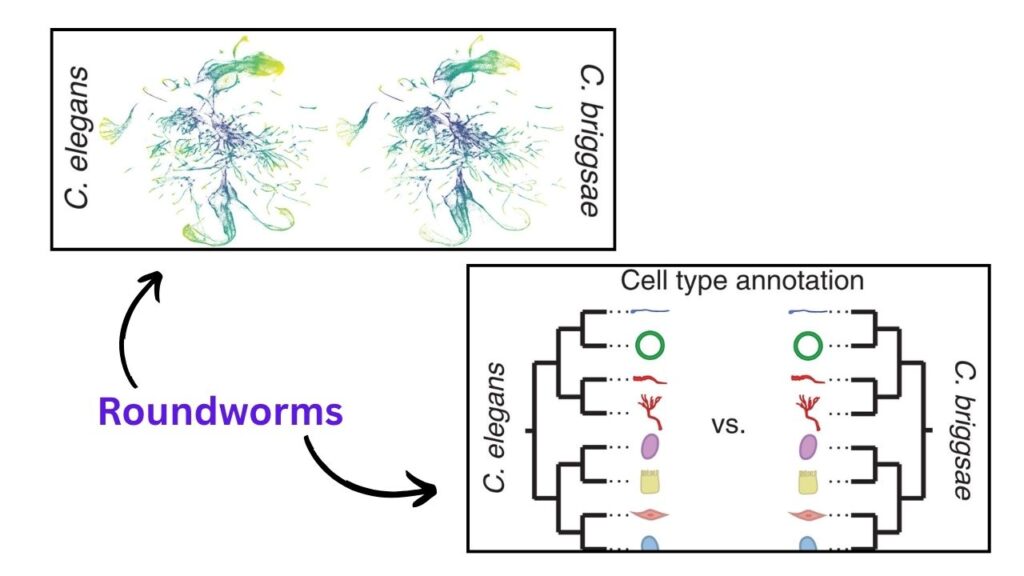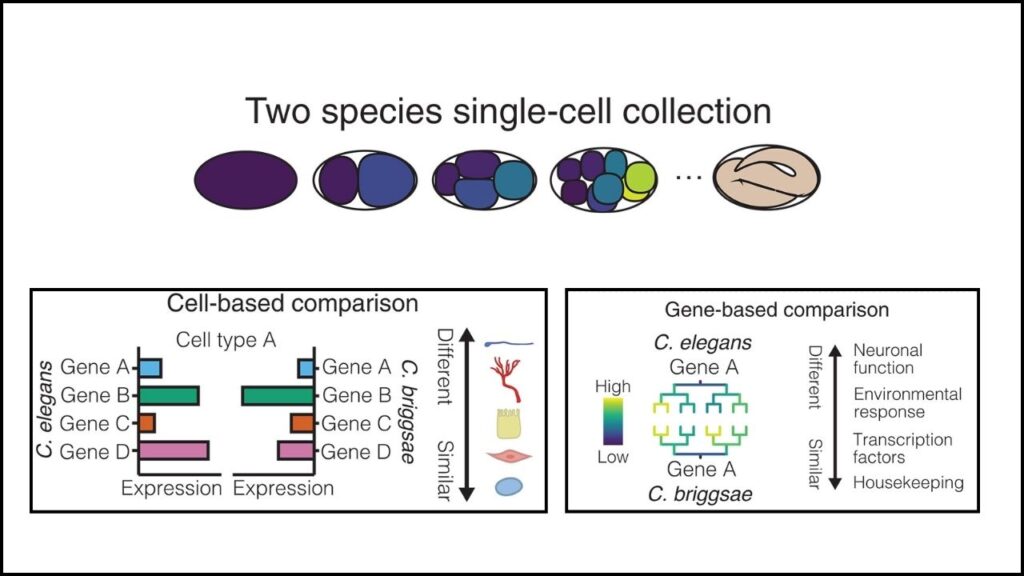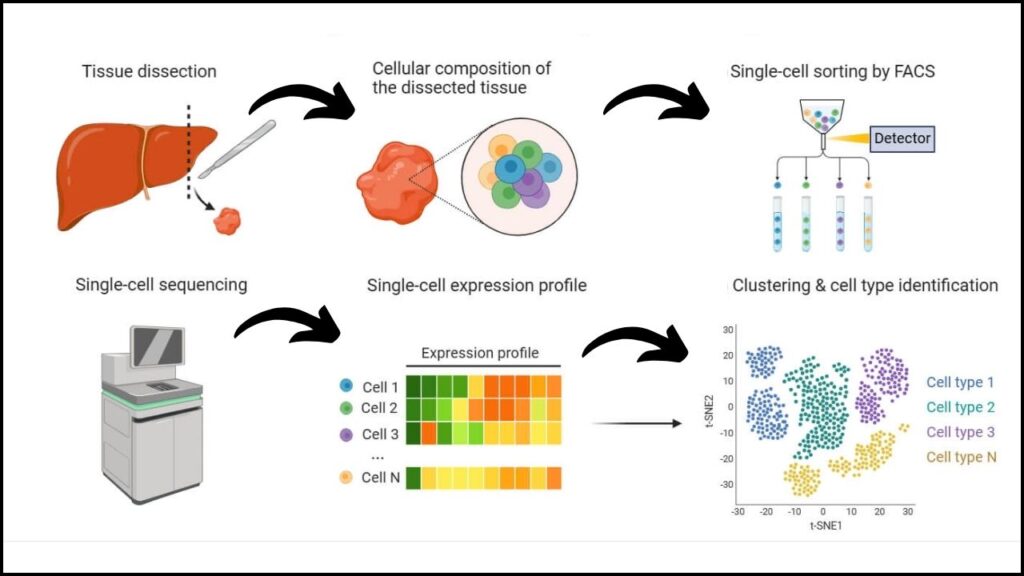Frozen Transparent Worms Maintain Gene Sync for 20 Million Years: Imagine two tiny, see-through worms, frozen in time, keeping their genetic “music” in perfect harmony for 20 million years. This isn’t science fiction—it’s the real story behind the remarkable discovery that frozen transparent worms maintain gene sync for 20 million years. In this article, we’ll break down what this means, why it’s important, and how it impacts everything from basic biology to future medical research.

Whether you’re a curious 10-year-old or a seasoned scientist, this guide will help you understand the science, the significance, and the practical lessons from this astonishing feat of evolutionary stability.
Frozen Transparent Worms Maintain Gene Sync for 20 Million Years
| Feature | Details |
|---|---|
| Species Studied | Caenorhabditis elegans and Caenorhabditis briggsae |
| Evolutionary Divergence | ~20 million years |
| Main Finding | Gene expression patterns in embryonic cells remain highly conserved across both species |
| Cell Types Most Conserved | Fundamental cells (muscle, gut, germline) |
| Cell Types Most Divergent | Specialized cells (neurons, environmental sensors) |
| Research Techniques | Single-cell RNA sequencing, lineage-resolved gene expression analysis |
| Official Source | Science Magazine |
| Professional Relevance | Insights into evolutionary biology, developmental genetics, and comparative genomics |
| Potential Applications | Understanding disease, aging, and gene regulation in higher organisms |
The discovery that frozen transparent worms maintain gene sync for 20 million years is a testament to the power and precision of evolution. It reveals that, even as species diverge and adapt, the fundamental instructions for building life can remain astonishingly stable. This research not only deepens our understanding of biology and evolution but also opens new doors for medical and genetic research.
What Does It Mean for Worms to Maintain “Gene Sync”?
Gene sync refers to the way organisms turn their genes on and off in a coordinated pattern, especially during development. In this case, scientists studied two species of roundworms—Caenorhabditis elegans and Caenorhabditis briggsae—that look almost identical but have been evolving separately for about 20 million years.

Despite this vast separation, these worms still use their genes in almost the same way when building their bodies from a single cell. Think of it as two orchestras playing the same symphony, even though they’ve been practicing on different continents for millions of years.
Why Did Scientists Study These Worms?
The Worms: Nature’s Tiny Time Capsules
- C. elegans and C. briggsae are both transparent, soil-dwelling nematodes.
- They are widely used as model organisms in genetics because their entire cell lineage (the family tree of every cell in their body) is known and highly predictable.
- Their transparency allows scientists to watch every cell as it develops, making them perfect for studying how genes control development.

The Big Question
Scientists wanted to know: How much does gene usage change as species evolve? Are the instructions for building a worm so important that they can’t be changed, or is there room for evolution to tinker?
How Did Researchers Discover the Gene Sync?
Step 1: Collecting Worm Embryos
Researchers gathered embryos from both C. elegans and C. briggsae at various stages of development.
Step 2: Single-Cell RNA Sequencing
They used a powerful technique called single-cell RNA sequencing. This lets scientists see exactly which genes are active in each individual cell at every stage of embryonic development.

Step 3: Mapping the Gene Expression
By tracking gene activity across thousands of cells, the team built a detailed map—or “atlas”—of gene expression for both worm species.
Step 4: Comparing the Maps
Finally, they compared these maps to see where the patterns were the same and where they differed.
What Did They Find? The Surprising Results
1. Most Gene Patterns Are Unchanged
The vast majority of gene expression patterns—especially those involved in making basic cell types like muscle, gut, and germline (cells that become eggs or sperm)—were almost identical in both species.
- Example: Genes needed to make a muscle cell turned on at the same time and in the same cells in both worms.
2. Differences in Specialized Cells
Where differences did appear, they were mostly in specialized cells, such as neurons (nerve cells) and cells that help the worm sense its environment.
- Example: Neurons showed more variation in which genes were turned on, possibly reflecting how each species adapted to its unique environment.
3. Evolutionary Constraints
These findings suggest that the “core” instructions for building a worm are so important that evolution keeps them almost unchanged. Changes mostly happen in areas where the worm needs to adapt to new challenges, like sensing different chemicals or responding to stress.
Why Is This Discovery Important?
A. Unlocking Secrets of Evolution
This study shows that some genetic programs are so vital that they can survive unchanged for tens of millions of years. It helps scientists understand which parts of the genome are “locked in” and which are free to evolve.
B. Insights for Medicine and Genetics
Since many genes in these worms are similar to those in humans, understanding how and why some gene networks stay stable can help researchers:
- Identify genes critical for development and health.
- Understand genetic diseases caused by disruptions in these core pathways.
- Develop new strategies for gene therapy and regenerative medicine.
C. Practical Lessons for Researchers
For scientists working in comparative genomics, this research highlights the value of using well-annotated model organisms and the importance of high-quality genome resources.
Practical Advice: How Can You Use These Insights?
For Students and Young Scientists
- Start with Model Organisms: Worms like C. elegans are great for learning genetics because their development is simple, predictable, and easy to observe.
- Ask Big Questions: Even simple creatures can answer deep questions about life, evolution, and disease.
For Professional Researchers
- Leverage Comparative Genomics: Use closely related species to identify which gene networks are evolutionarily conserved.
- Focus on Core Pathways: Target highly conserved genes when studying essential biological processes or developing new therapies.
- Use Manual Curation: High-quality, manually curated gene models improve the accuracy of comparative studies.
For Educators
- Make It Visual: Use diagrams and time-lapse videos of worm development to help students visualize gene expression.
- Connect to Human Health: Explain how discoveries in worms can lead to breakthroughs in understanding human biology.
PsiQuantum Study Reveals Roadmap For Loss-Tolerant Photonic Quantum Computing
Marvell Says Future of Cloud Computing Depends on Custom-Built Silicon Chips
Superconducting Circuits May Soon Replace Semiconductor Components, Researchers Reveal
FAQs About Frozen Transparent Worms Maintain Gene Sync for 20 Million Years
Q1: What is gene expression?
Gene expression is the process by which information from a gene is used to make a functional product, like a protein. It’s how cells “read” their DNA instructions.
Q2: Why are C. elegans and C. briggsae good for this research?
They are transparent, have simple bodies, and their entire cell lineages are mapped. This makes it easy to study how genes control development.
Q3: How do these findings relate to humans?
Many genes in these worms are similar to human genes. Understanding which gene networks are stable over time can help us pinpoint critical genes for health and disease.
Q4: What are the limits of this research?
While worms are great models, they are still much simpler than humans. Not all findings will translate directly, but the principles often do.






